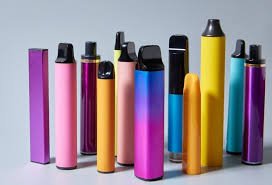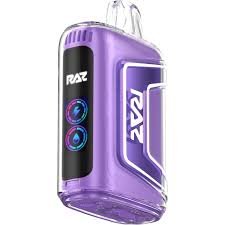The Future of Vaping: What’s Next for the Industry in 2025?

Vaping has come a long way since its inception, evolving from a niche alternative to smoking to a widely accepted activity in many parts of the world. As we look ahead to 2025, the vaping industry is poised to undergo even more significant transformations. With advancements in technology, changes in regulations, and shifts in consumer behavior, the future of vaping will be shaped by several key factors. In this blog, we will explore what’s next for the vaping industry, how consumer preferences are evolving, and what innovations we can expect to see in the coming years.
1. Technological Advancements in Vaping Devices
The evolution of vaping technology has been one of the driving forces behind the industry’s growth. In the next few years, we can expect even more innovative devices that offer enhanced performance, better flavor delivery, and improved user experience. One major trend we’re likely to see is the rise of smart vaping devices. These devices will integrate with smartphones or other smart technologies to provide users with personalized vaping experiences, such as adjusting the temperature, tracking usage, or monitoring e-liquid consumption.
Additionally, battery technology will continue to improve. The current generation of vaping devices offers impressive battery life, but advancements in battery efficiency and capacity will allow for even longer vaping sessions without needing to recharge. Devices that last longer and charge faster will appeal to vapers who want a seamless experience throughout the day.
Another area of growth is the use of advanced heating technologies. New types of coils, such as ceramic or mesh coils, will become more widespread, offering smoother hits and more consistent flavor. This will be particularly beneficial for vapers who prioritize flavor above all else. As technology progresses, we’ll likely see devices that are not only more efficient but also more customizable to suit individual preferences.
2. Increased Focus on Health and Safety Standards
As vaping continues to gain popularity, concerns about its health implications remain a central issue in the public discourse. By 2025, we can expect stricter regulations and higher health standards within the industry. Governments around the world are already taking steps to regulate vaping products more rigorously, and this trend will continue into the future.
In many countries, vaping products are being subject to more comprehensive safety and quality control measures. This includes ensuring that e-liquids are made with safe, high-quality ingredients, and that devices meet rigorous safety standards to prevent malfunctions or hazards. Expect to see an increase in quality certification programs for vaping products, where manufacturers must prove their products meet specific health and safety criteria before they can be sold.
As the industry matures, more research will emerge on the long-term health effects of vaping. This will likely lead to a better understanding of the risks and benefits of vaping compared to smoking, helping to further define the role of vaping in public health. Whether this leads to more regulations or increased consumer confidence will depend on the results of ongoing studies.
3. The Emergence of Nicotine-Free and Low-Nicotine Products
As the vaping market continues to diversify, we’ll see a growing shift toward nicotine-free and low-nicotine products. While nicotine-based vapes have traditionally dominated the market, more vapers are opting for devices that allow them to enjoy the act of vaping without the addictive substance. This is particularly true for people who want to quit smoking or reduce their nicotine consumption over time.
The rise of zero-nicotine vapes, like the Raz vape, caters to a growing demographic that enjoys the flavors and sensations of vaping but without the nicotine hit. The demand for nicotine-free options is already rising, and by 2025, we can expect a wider variety of nicotine-free e-liquids and devices designed specifically for those who want to enjoy vaping without any health risks associated with nicotine.
Moreover, there will be a continued focus on products with lower nicotine concentrations, allowing users to gradually reduce their nicotine intake in a controlled and manageable way. For those trying to quit smoking or transition to a nicotine-free lifestyle, these products will play a crucial role in the vaping landscape.
4. Flavors, Customization, and Personalization
One of the primary appeals of vaping is the wide array of flavors available, and this trend is only set to expand in the coming years. In 2025, vapers can expect even more flavor variety, with unique blends and creative options designed to enhance the overall vaping experience. Manufacturers are constantly experimenting with new combinations, and the demand for more complex, nuanced e-liquid profiles will drive innovation in flavor development.
As technology progresses, vaping products will also become more customizable. We’re already seeing the rise of adjustable wattage and airflow settings in advanced mods, and by 2025, we could see devices that allow even more detailed customization of the vaping experience. Imagine a vape mod where users can adjust the flavor intensity or even choose between different heating styles to alter the taste and smoothness of their vape.
The popularity of DIY e-liquids will also continue to rise, allowing consumers to mix their own flavors and create personalized blends. This movement towards greater customization reflects a broader trend in consumer behavior—today’s vapers are increasingly interested in personalized experiences, and the vaping industry will respond to this demand by offering more options for tailored vaping.
5. The Role of Sustainable and Eco-Friendly Products
Sustainability has become a key focus in many industries, and vaping is no exception. By 2025, we can expect to see a greater emphasis on eco-friendly vaping products, as manufacturers seek to reduce the environmental impact of their devices and packaging. This could include recyclable materials for disposable vapes, biodegradable pods, and even refillable e-liquid cartridges that reduce waste.
In addition to product sustainability, companies will likely place more emphasis on ethical sourcing and the use of sustainable ingredients in e-liquids. As consumers become more environmentally conscious, they will demand products that align with their values, and the vaping industry will need to adapt accordingly.
Furthermore, we may see more initiatives that encourage vapers to properly dispose of used products. Programs that allow consumers to return empty pods or cartridges for recycling or repurposing will help reduce the overall environmental impact of the industry.
6. Vaping Regulation and Legislation Around the World
One of the biggest factors that will shape the vaping industry by 2025 is vaping regulations. Countries around the world are already enacting legislation to regulate vaping, and this trend is expected to continue. In the United States, the FDA has already taken steps to regulate the sale and marketing of e-cigarettes, and other countries such as the UK and Australia have implemented their own laws governing vaping products.
By 2025, we can expect more countries to impose stricter regulations, including age restrictions, flavor bans, and packaging requirements. These regulations will likely aim to protect younger generations from becoming addicted to nicotine and to address public health concerns associated with vaping. However, the overall impact on the vaping industry will depend on how these laws are enacted and enforced globally.
Some manufacturers may look to adjust their products to comply with these new regulations, potentially leading to reformulations of certain e-liquids and devices. Additionally, there may be a move toward more transparent labeling of ingredients and nicotine content to ensure consumers are well-informed about the products they are purchasing.
7. Social Acceptance and Vaping Culture
Over the next few years, we expect to see vaping become more integrated into mainstream culture. As the health risks of smoking become more widely understood, more smokers are transitioning to vaping as a safer alternative. Vaping may become more socially acceptable, with vaping lounges, events, and conventions becoming more commonplace.
As vaping becomes a more accepted activity, we may see a shift in the way vapers are perceived by society. The stigma that once surrounded vaping, particularly in the early years, could diminish, leading to a more positive image of vapers and the vaping community as a whole.
Conclusion
The future of vaping in 2025 looks incredibly promising, with advancements in technology, flavor innovation, sustainability, and consumer preference all driving the industry forward. Whether it’s the continued rise of nicotine-free options like the Raz vape, the growing focus on personalization, or the increased regulatory scrutiny, the vaping landscape will undoubtedly undergo significant transformations. As long as manufacturers continue to innovate and cater to the needs of vapers, the industry will continue to thrive in the years to come. Whether you’re a casual vaper or a die-hard enthusiast, it’s clear that vaping is here to stay—and the future is bright.




